I have a little problem using gnuplot. Here is my datafile:
From Time Packets Jitter
127.0.0.1:53091 1 0 274
127.0.0.1:53091 2 0 417
127.0.0.1:53091 3 36 53
127.0.0.1:53091 4 215 55
127.0.0.1:53090 4 215 55
127.0.0.1:53091 5 215 33
127.0.0.1:53090 6 256 78
(I put that "time" for the test, but it will be replaced by a datetime after it works)
I want to draw two different graphics, with Time column in x axis on both, and Packets column (on a first graphic) & Jitter column (on a second graphic) in y axis. But, as you may have seen, I don't know how many different values from the From column I will have (minimum 1, but I don't know the maximum, the data file will be refresh and some values will be added each x seconds).
So my problem is that I want to make another 'line' each different From values on both graphics.
In fact, having the From value in title of lines (example : "127.0.0.1:53091").
I want to add that if it's possible to change column order.
I tried:
plot 'data.log' using 3:xtic(2) title 'Packets' with lines, \
'data.log' using 4:xtic(2) title 'Jitter' with lines
But it's on the same graphic (I don't use multiplot yet, I tried to make the multiple lines works before).
Is it possible ? If it is, How can I plot this two graphics in gnuplot ?
If not, we can remove the Jitter graphic, and plot only the Packets column on a single graphic but with the different From values.


